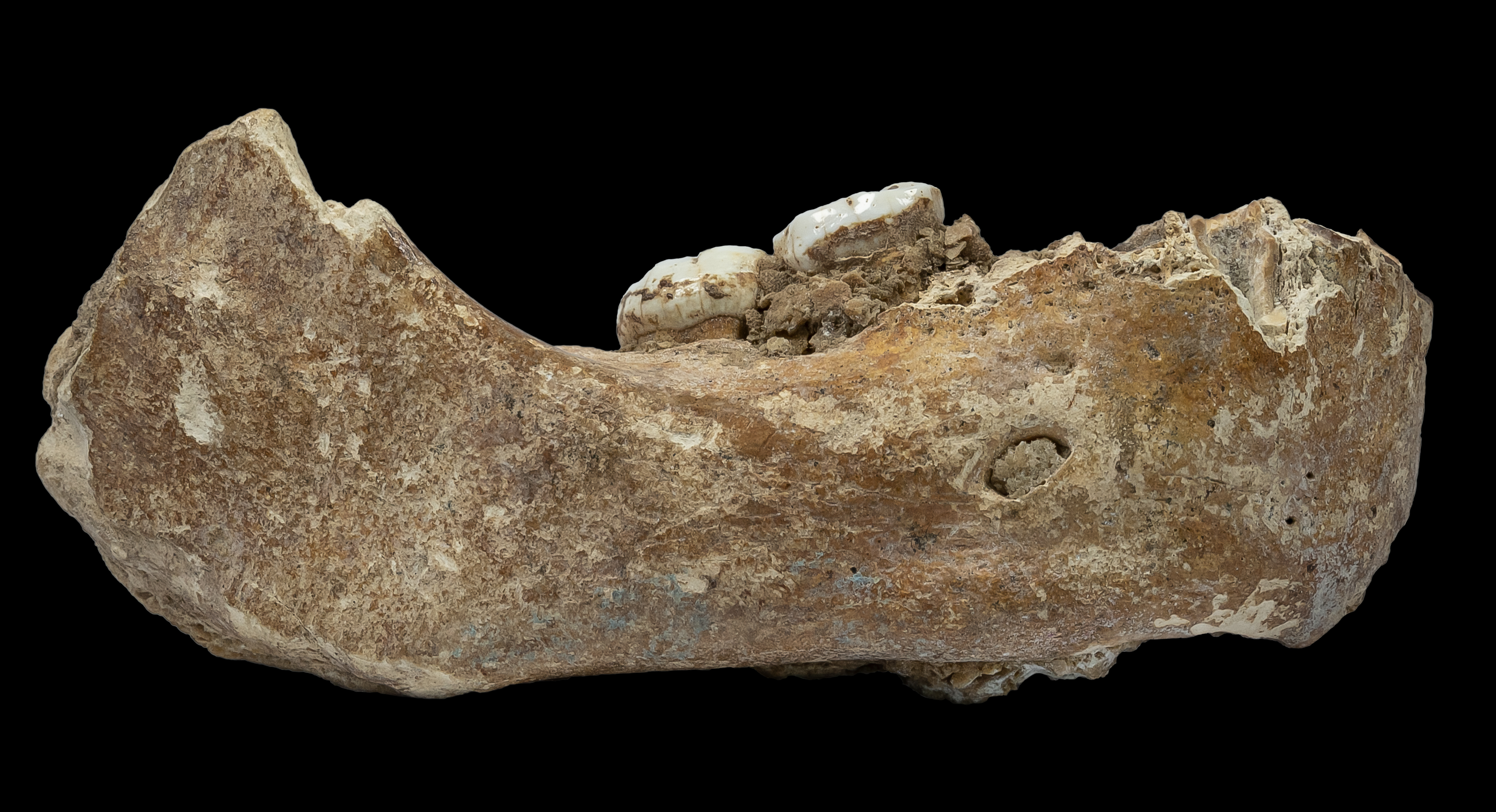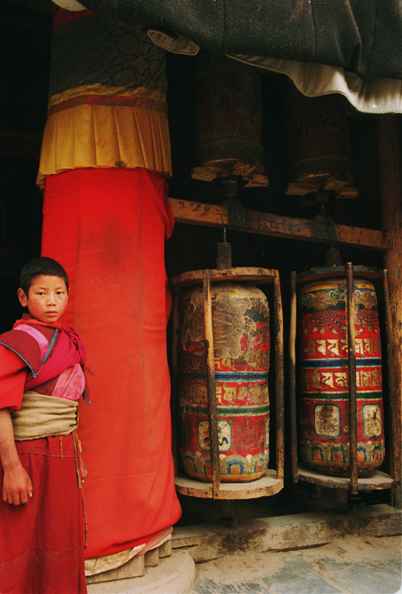|
Xiahe
Xiahe County ( zh, s=夏河县; ) is a county in Gannan Tibetan Autonomous Prefecture, Gansu province, China, bordering Qinghai province to the west. The name (both Chinese and Tibetan), which literally means "Xia River", refers to the Daxia River which runs through the county. It is home to the famed Labrang Tibetan Buddhist monastery, one of the largest Tibetan Buddhist monasteries outside the Tibet Autonomous Region. The town is populated largely by ethnic Tibetans, as well as some Hui and Han Chinese. The area is highly rural and pastoral (including yak and other animal rearing). The geography is mountainous. In recent years it has become a tourist attraction. The county was named Xiahe in 1928, after the Daxia River that flows through its territory. History Xiahe (Sangqu) used to be part of Qinghai when it was under the control of Chinese Muslim General Ma Qi. It was the site of bloody battles between Muslim and Tibetan forces. In 1980, Xiahe mandible, a hominin fossil ... [...More Info...] [...Related Items...] OR: [Wikipedia] [Google] [Baidu] |
Xiahe Mandible
The Xiahe mandible (, ) is a hominin fossil jaw (mandible) discovered in Baishiya Karst Cave, located on the northeastern edge of the Tibetan Plateau in Xiahe County, Gansu, China. By the use of palaeoproteomic analysis, it is the first confirmed discovery of a Denisovan fossil outside of Denisova Cave, and the most complete confirmed Denisovan fossil. This fossil discovery shows that archaic hominins were present in a high-altitude, low-oxygen environment around 160,000 years ago. ''Discover'', ''Science News'' and ''Nova'' all named the discovery of the mandible in their lists of Top Science Stories of 2019. History The Xiahe mandible was discovered in 1980 in the Baishiya Karst Cave, located on the northeastern edge of the Tibetan Plateau in Xiahe County, Gansu, China. It was found by a Tibetan Buddhist monk who was meditating in the cave. He passed the bone to , the sixth tulku, who recognized it as an important hominin fossil and gave it to geologist Dong Guangrong ... [...More Info...] [...Related Items...] OR: [Wikipedia] [Google] [Baidu] |
Baishiya Karst Cave
Baishiya Karst Cave () is a high-altitude paleoanthropological site and a Tibetan Buddhist sanctuary located on the northeastern edge of the Tibetan Plateau in Xiahe County, Gansu, China. This karst cave is the site of the discovery of the earliest hominin fossil found on the Tibetan Plateau, the Xiahe mandible. The mandible, by way of palaeoproteomic analysis, is the first confirmed discovery of a Denisovan fossil outside of Denisova Cave. This fossil discovery shows that archaic hominins were present in a high-altitude, low-oxygen environment by around 160,000 years ago. Geography Baishiya Karst Cave is located in Ganjia (), Xiahe County, Gannan Tibetan Autonomous Prefecture, Gansu, China, on the northeastern edge of the Tibetan Plateau. It lies on the southern side of Dalijiashan Mountain, at the foot of a white cliff. The cave is situated in the Ganjia Basin, at the mouth of the Jiangla River, a tributary of the Yangqu River. The cave is over in length. Within from ... [...More Info...] [...Related Items...] OR: [Wikipedia] [Google] [Baidu] |
Gannan Tibetan Autonomous Prefecture
Gannan Tibetan Autonomous Prefecture ( zh, c=甘南藏族自治州, p=Gānnán Zàngzú Zìzhìzhōu; ) is an autonomous prefecture in southern Gansu Province, China, bordering Linxia to the north, Dingxi to the northeast, Longnan to the east and Aba (Sichuan province) to the south. It includes Xiahe and the Labrang Monastery, Luqu, Maqu and other mostly Tibetan towns and villages. Gannan has an area of and its capital is Hezuo city (Zoi). In the first year of the proclamation of Gannan Autonomous District, the district-seat was at the Labrang Town of Sangqu. Population According to the 2010 census, Gannan has 689,132 inhabitantsCensus 2012 http://www.geohive.com/cntry/cn-62.aspx (population density: 17.14 inhabitants per km2). Ethnic groups in Gannan, 2000 census Transport In the prefecture is high-way G213. In 2013, the Gannan Xiahe Airport was opened. Subdivisions 1 county level city, 7 counties. Climate Gannan, as illustrated by this chart for Xiahe, ... [...More Info...] [...Related Items...] OR: [Wikipedia] [Google] [Baidu] |
Labrang Monastery
Labrang Monastery (; Chinese: Lābǔléng Sì, 拉卜楞寺) is one of the six great monasteries of the Gelug school of Tibetan Buddhism founded by Je Lama Tsongkhapa. Its formal name is ''Genden Shédrup Dargyé Trashi Gyésu khyilwé Ling'' (). Labrang is located in Labrang Town of Xiahe (Sangqu) County, Gannan Tibetan Autonomous Prefecture, Gansu, in the traditional Tibetan area of Amdo. Labrang Monastery is home to the largest number of monks outside the Tibet Autonomous Region. Xiahe is about four hours by car from the provincial capital Lanzhou. In the early part of the 20th century, Labrang was by far the largest and most influential monastery in Amdo. It is located on the Daxia River, a tributary of the Yellow River. History The monastery was founded in 1709 by the first Jamyang Zhépa, Ngawang Tsöndrü. It is one of Tibetan Buddhism's most important monastery towns outside the Tibetan Autonomous Region. Labrang Monastery is situated at the strategic intersecti ... [...More Info...] [...Related Items...] OR: [Wikipedia] [Google] [Baidu] |
Gansu
Gansu is a provinces of China, province in Northwestern China. Its capital and largest city is Lanzhou, in the southeastern part of the province. The seventh-largest administrative district by area at , Gansu lies between the Tibetan Plateau, Tibetan and Loess Plateau, Loess plateaus and borders Mongolia's Govi-Altai Province, Inner Mongolia and Ningxia to the north, Xinjiang and Qinghai to the west, Sichuan to the south and Shaanxi to the east. The Yellow River passes through the southern part of the province. Part of Gansu's territory is located in the Gobi Desert. The Qilian Mountains, Qilian mountains are located in the south of the Province. Gansu has a population of 26 million, ranking List of Chinese administrative divisions by population, 22nd in China. Its population is mostly Han Chinese, Han, along with Hui people, Hui, Dongxiangs, Dongxiang and Tibetan people, Tibetan minorities. The most common language is Mandarin. Gansu is among the poorest administrative divi ... [...More Info...] [...Related Items...] OR: [Wikipedia] [Google] [Baidu] |
Daxia River
The Daxia River () or Sangchu () is a tributary of the Yellow River in southern Gansu province in China's west. The Daxia River starts in eastern Huangnan Tibetan Autonomous Prefecture in Qinghai, then flows easterly through northern Gannan Tibetan Autonomous Prefecture where its drainage basin covers large parts of Hezuo County-level City and Xiahe County. It then flows northeast into Linxia Hui Autonomous Prefecture, where it is crosses the breadth of Linxia County, and Linxia City. Its lower course forms the border between Linxia County and the neighbouring Dongxiang Autonomous County to the east. The river forms a large bay at its mouth in the Liujiaxia Reservoir. Within Linxia Hui Autonomous Prefecture, the wide valley of Daxia River, flanked on both sides by loess plateaus, is a major agricultural and residential area. Both Hanji town (the county seat of Linxia County) and Linxia City are located in this valley. References Rivers of Gansu Linxia Hui Autonomo ... [...More Info...] [...Related Items...] OR: [Wikipedia] [Google] [Baidu] |
Postal Code Of China
Postal codes in the China, People's Republic of China () are postal codes used by China Post for the delivery of letters and goods within mainland China. China Post uses a six-digit all-numerical system with four tiers: the first tier, composed of the first two digits, show the provinces of China, province, province-equivalent direct-controlled municipalities of China, municipality, or autonomous regions of China, autonomous region; the second tier, composed of the third digit, shows the postal zone within the province, municipality or autonomous region; the fourth digit serves as the third tier, which shows the postal office within prefectures of the People's Republic of China, prefectures or prefecture-level city, prefecture-level cities; the last two digits are the fourth tier, which indicates the specific mailing area for delivery. The range 000000–009999 was originally marked for Taiwan (The Republic of China) but is not used because it not under the control of the People' ... [...More Info...] [...Related Items...] OR: [Wikipedia] [Google] [Baidu] |
Ma Qi
Ma Qi (, Xiao'erjing: ; 23 September 1869 – 5 August 1931) was a Chinese Muslim General in early 20th-century China. Early life A Hui, Ma was born on 23 September 1869 in Daohe, now part of Linxia, Gansu, China. His father was Ma Haiyan and his brother was Ma Lin. He was a senior commander in the Qinghai-Gansu region during the late Qing dynasty. Ma Sala was said to be his father. Ma Qi led loyalist Muslim troops to crush Muslim rebels during the Dungan Revolt (1895). During the Boxer Rebellion Ma Qi served with his father Ma Haiyan in Gen. Dong Fuxiang's Kansu Braves against the invading Eight Nation Alliance in Beijing. Ma Haiyan defeated the foreign army at the Battle of Langfang in 1900, and died while protecting the Imperial Family from the western forces. Ma Qi succeeded him in all his posts and capacities. Ma Qi was tall and maintained the mintuan militia in Xining as his personal army, called the Ninghaijun. He also directly defied his commanding officer, Mu ... [...More Info...] [...Related Items...] OR: [Wikipedia] [Google] [Baidu] |
Zhao River
Zhao may refer to: * Zhao (surname) (赵), a Chinese surname ** commonly spelled Chao in Taiwan or up until the early 20th century in other regions ** Chiu, from the Cantonese pronunciation ** Cho (Korean surname), represent the Hanja 趙 (Chinese: Zhao) ** Triệu, a Vietnamese surname which is the equivalent of the Mandarin Chinese surname Zhao (趙) * Zhao County, in Shijiazhuang, Hebei, China * Zhao family (other) ** Zhao family (Internet slang), based on the surname Zhao, an internet term in China which refers to the ruling elite and the rich * 兆 (zhào), a Chinese numeral which usually represents 106 or 1012 **Mega-, corresponding SI prefix in China, equals to 106 **Tera-, corresponding SI prefix in Taiwan, equals to 1012 * Admiral Zhao, a character in the animated series ''Avatar: The Last Airbender'' Chinese history * Zhao (state) (403 BC–222 BC), a Warring States period state * Triệu dynasty (204 BC–111 BC), or Zhao dynasty, the ruling house of the N ... [...More Info...] [...Related Items...] OR: [Wikipedia] [Google] [Baidu] |
Subarctic Climate
The subarctic climate (also called subpolar climate, or boreal climate) is a continental climate with long, cold (often very cold) winters, and short, warm to cool summers. It is found on large landmasses, often away from the moderating effects of an ocean, generally at latitudes from 50°N to 70°N, poleward of the humid continental climates. Like other Class D climates, they are rare in the Southern Hemisphere, only found at some isolated highland elevations. Subarctic or boreal climates are the source regions for the cold air that affects temperate latitudes to the south in winter. These climates represent Köppen climate classification ''Dfc'', ''Dwc'', ''Dsc'', ''Dfd'', ''Dwd'' and ''Dsd''. Description This type of climate offers some of the most extreme seasonal temperature variations found on the planet: in winter, temperatures can drop to below and in summer, the temperature may exceed . However, the summers are short; no more than three months of the year (but at least on ... [...More Info...] [...Related Items...] OR: [Wikipedia] [Google] [Baidu] |




